The Adults of Pu Sam Gnua No Longer Smile
Written by Adam J. Cheshier & Photos by Lola Delabays
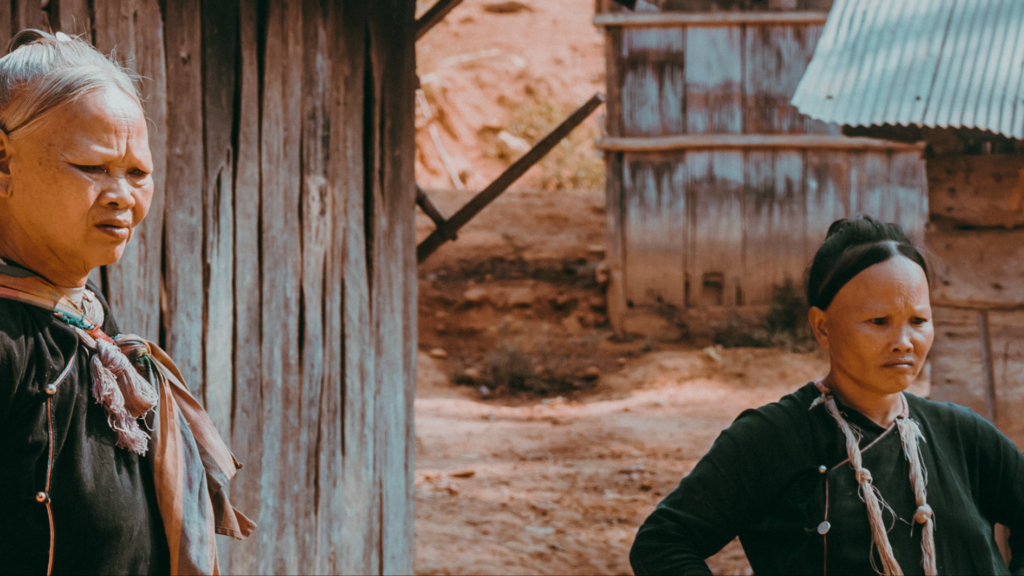
The adults of Pu Sam Gnua no longer smile.
They don’t even so much as look at the western tourists gawking at their living conditions – most of whom have their camera at-the-ready.
Even the young children of the village seem to be taught to pay no mind to tourists.
Touted as a ‘cultural experience’, this is the environment which awaited me as I indulged in a weekend tour of a remote Laotian forest village.
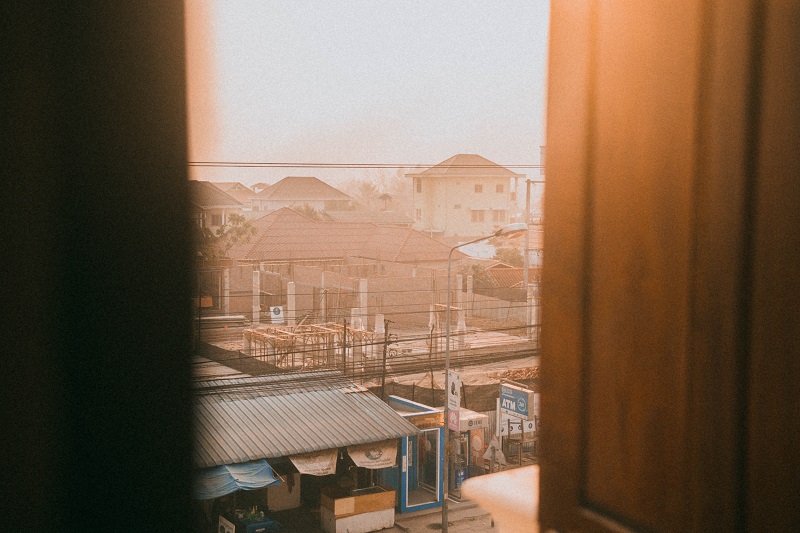
The tour takes off from a town called Luang Namtha, which is pegged as the tourist hub of Northern Laos. Though, ‘hub’ is used generously here. Only one company operates the tours which bring anywhere from 4-12 tourists to the village each day.
“Some people call this region the Final Frontier of Southeast Asia,” Remi Dupont says to me. He’s the French owner of the company. “Very few visitors come this far north – for that reason, there is a major lack in proper tourism protocol.”
To further illustrate his point, he explained to me that the most popular attraction of the region, the Mekong River ‘cruises’ – running from the northern border with China down through Luang Prabang – are also the most dangerous.
“All along the banks, you’ll see capsized vessels – speed boats which formerly carried tourists. Most boat operators are inexperienced. They’re merely guessing nautical depth rather than reading it as they meander through the Mekong.”
We clang onto the bed of a beat-up truck, en-route to the trailhead which would take us to the village. It rumbled across unpaved roads until we were a half-hour outside of town.
Some people call this region the Final Frontier of Southeast Asia.
To get to Pu Sam Gnua village, one must trek eight hours through the Nam Ha National Biodiversity Conservation Area. Its remoteness in the mountains make it somewhat of a sought-after experience for the few tourists who make it that far.
The Nam Ha Reserve is one of the most biodiverse areas in the country. It has been protected for nearly half a century. Within it, you’ll find all sorts of exotic wildlife, including but not limited to: clouded leopards, Indian bison, tigers, and Asian elephants. A local guide was absolutely necessary to avoid unwanted predators.
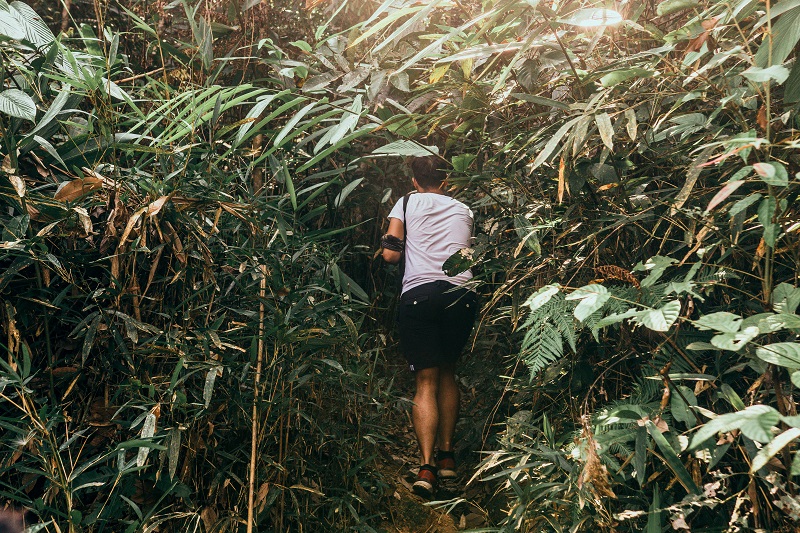
The tour promised a unique, expedition-like experience – selling dreams to adventure travelers alike, using exaggerated phrases like Remi used such as the “final frontier” and it being a “cultural exchange”.
Remi didn’t join our trek. After founding the company, I’m sure it doesn’t take but a few times hiking the treacherous trail which we faced – over 20 kilometers through thick jungle fauna – before you leave customers in the hands of trustee local employees.
Unfortunately, “Speedy Gonzalez”, as the man from Luang Namtha asked us to be called, didn’t speak English. Therefore, he wasn’t so much a tour guide as he was just there to make sure we didn’t become some exotic animal’s dinner.
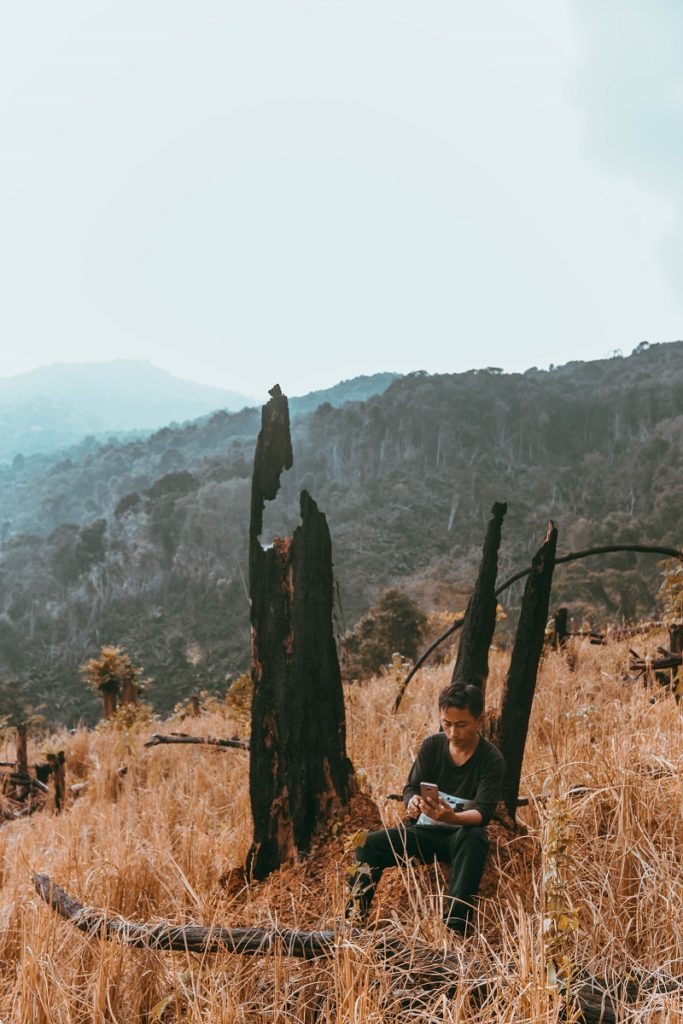
We were to meet one of Laos’ oldest indigenous mountain tribes, the Akha people. An ethnic group who live in small villages spread across the hills of northern South East Asia. A minority community which has mostly avoided western social and economic changes for centuries.
Interestingly, in the last two decades, the Akha people have found themselves in the business of Western ecotourism, whether solicited or not.
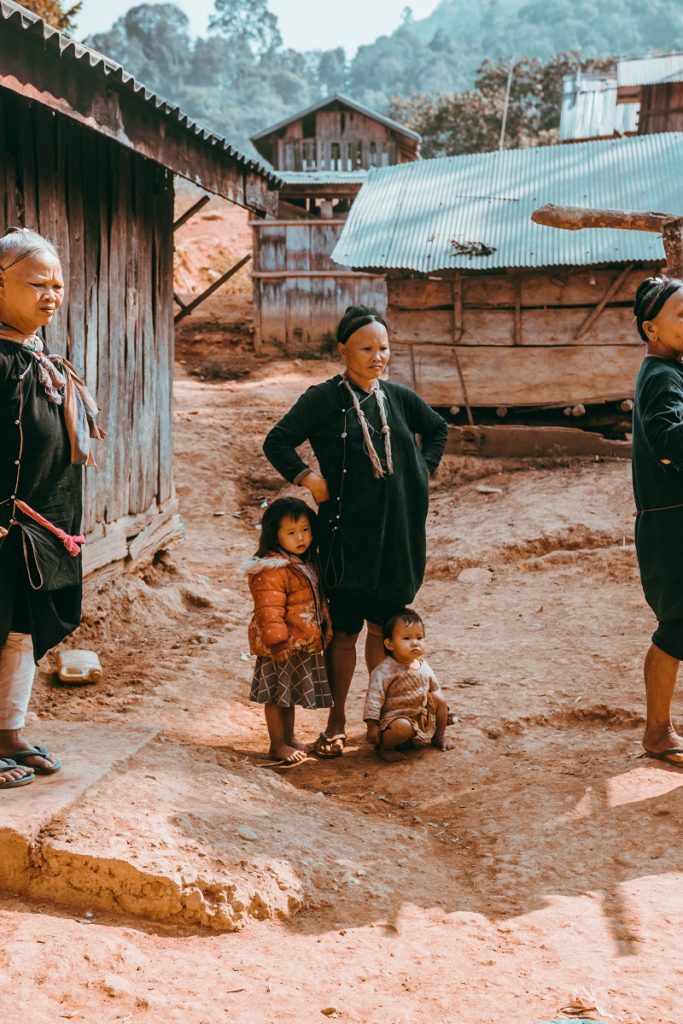
Akha life
The Akha tribe are almost exactly what one would imagine an indigenous community as being.
Akha men are fierce, skilled hunters. Though most of their traditional bows have been traded in for guns, they still treat hunting as a favorite pastime. With the abundance of wildlife around them, meat from hunting sessions is a staple in the Akha diet.
Still, agriculture is the center of their economy and diet. Indeed, my favorite parts of the Akha cuisine were sprung from vegetables. Sapi thong-ueh is a salsa-like spicy sauce which regularly compliments a plate full of vegetables. Crops like soybeans and other vegetables grow in surplus. And, of course, rice is their most significant crop.
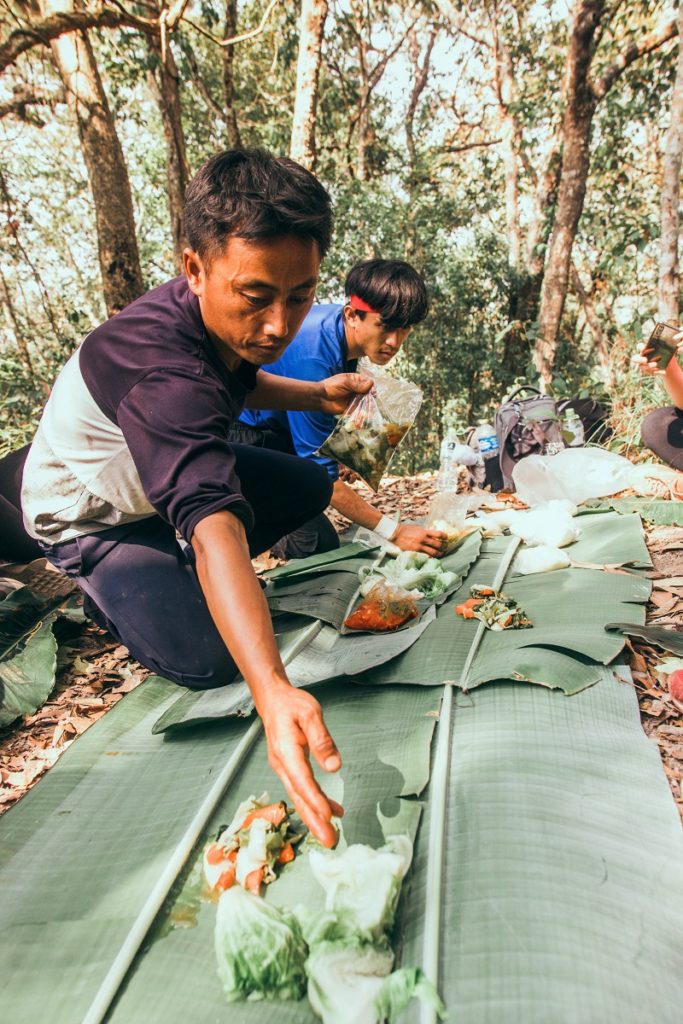
Even opium is available on the underground trade. As a matter of fact, the opium trade of Southeast Asia and the subsequent criminalization largely affected the Akha hill tribes’ economy.
Another side effect of the opium and, later, heroin trade of northern Southeast Asia is the roots of addiction which swept (and is still sweeping) Akha society. An elder man took frequent tokes from his opium pipe while our tour progressed.
The Akha belief system, a religion referred to as zahv, is one which blends ancestor worship with the spiritual essence of nature; in animals, plants, rocks, rivers, clouds, etc. Rituals take place almost daily, though I never witnessed any during my time in the village.
Religious folklore passed down for generations reflects tales of spirits and humans coming from the same mother, living in harmony. That is, until arguments drove them apart. Then, it is said, spirits went to live in the forest while humans stayed in the village.
This is why the Akha believe spirits are responsible for all sickness, and it’s why the Akha calendar is divided into two seasons: Dry, or “Peoples’ season”, and wet, or “Spirit’s season”. During the latter, disease is thought to spread rampant until a village offering is made to the spirits.
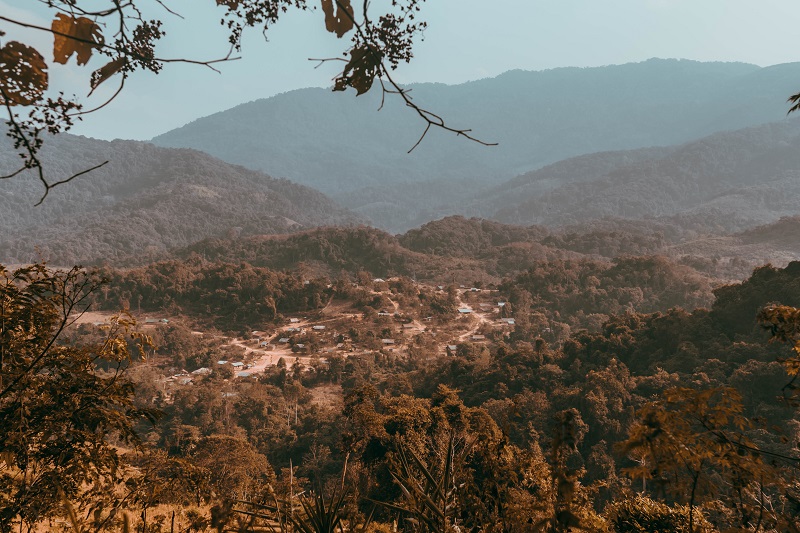
Akha living tour
We arrived at dusk, stepping through the village gate which is replaced every year to keep the spirits out. It’s adorned with intricate wooden carvings of men and women equally. After all, the Akha society is considered egalitarian. The carvings were meant to symbolize the division of man, woman, and domesticated animals inside the village versus wild animals, beasts, and spirits of the forest outside the gate.
There is not long before the sun dips below the hilly horizon, so we are shepherded through the village like cows on a conveyor belt – just like all tourist groups of Pu Sam Gnua before us.
First, we’re taken to the only water spout in the village which was recently installed to provide water to the 25 families who live here. There was a topless woman bathing at the spout when we arrived. She glanced at us but hardly seemed phased by her audience.
Not to waste a second, we were pushed up the hill to the one-room school hut. It had no flooring, glass-less windows; wooden chairs and desks were all unstable and leaning. Nothing would hold my weight – everything made by an unskilled hand and shotty material.
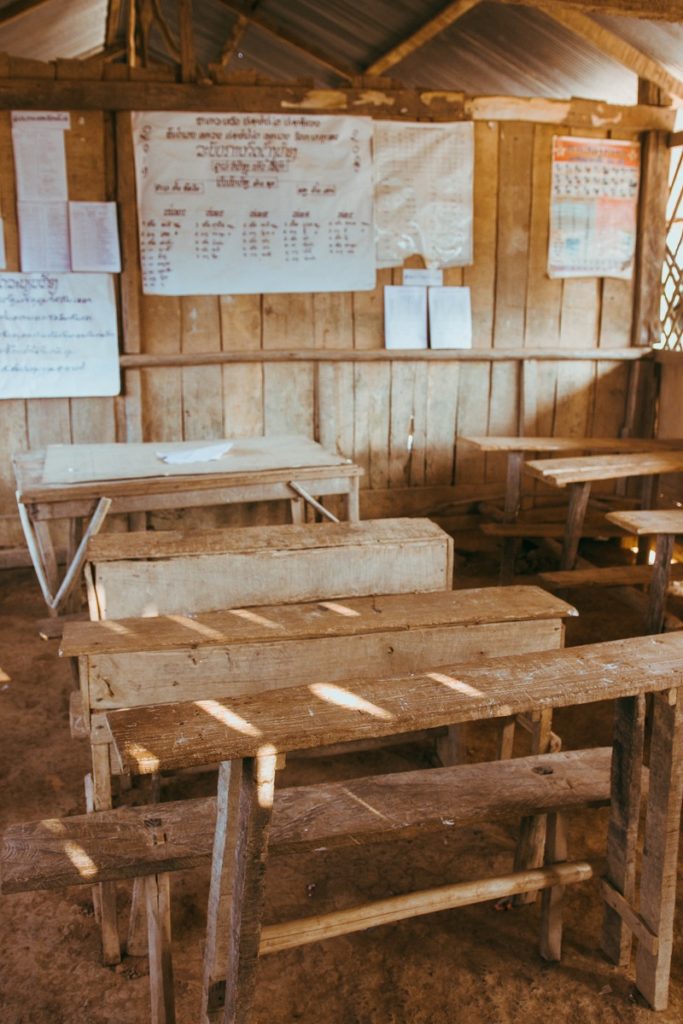
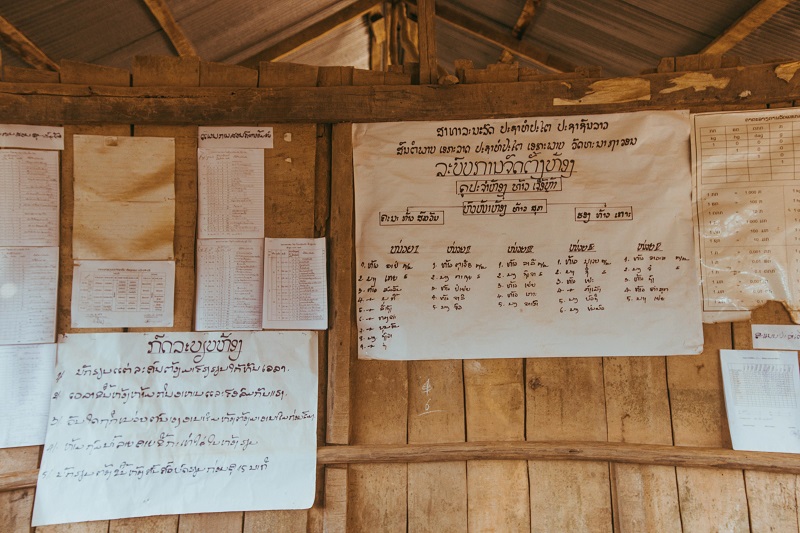
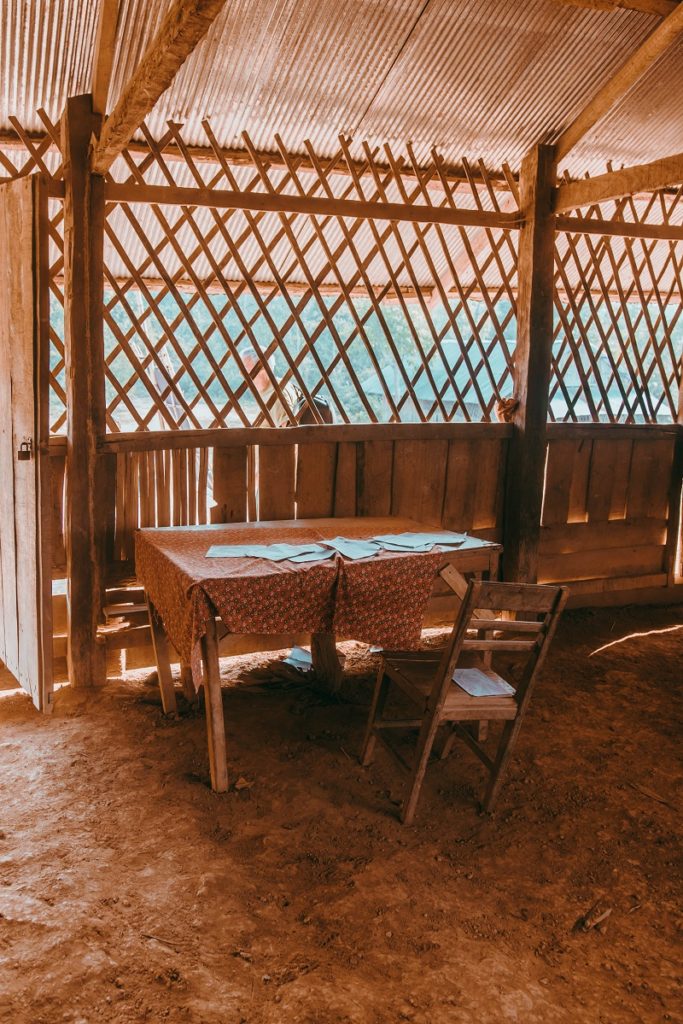
The school hut seemed to haven’t been used for a few years. The date on the chalkboard read 2017. It was 2020 when I visited. Our guide said children in the village don’t often go to school because they struggle to find a long-term educator.
Rather, the grounds of the school were made into a taking-off point for the children’s favorite game. In their toy jeeps, they’d push each other down the hill, often young, and often rolling uncontrollably down the steep hill. A few times, we’d have to jump out of the way to avoid being run over. However, the joy on their faces was unparalleled to any emotion I saw the rest of my time in Pu Sam Gnua.
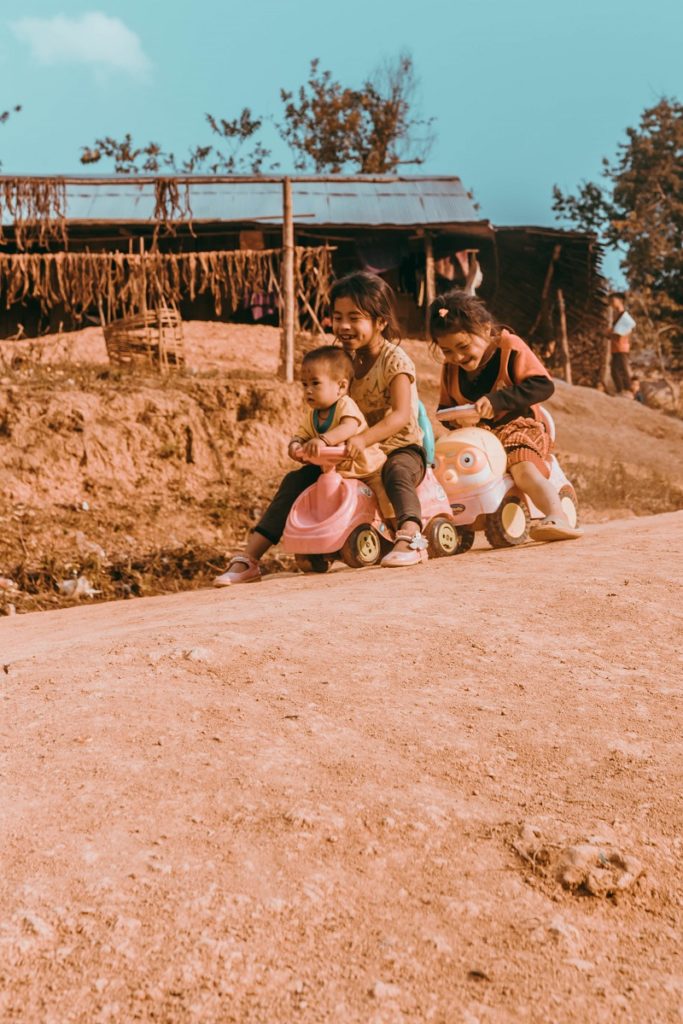
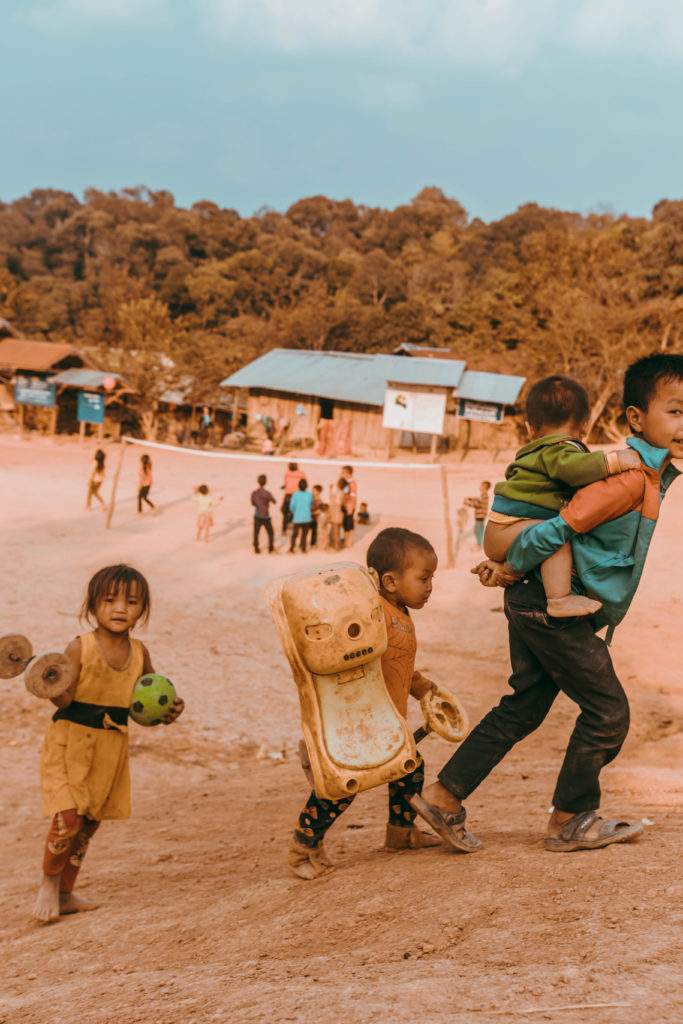
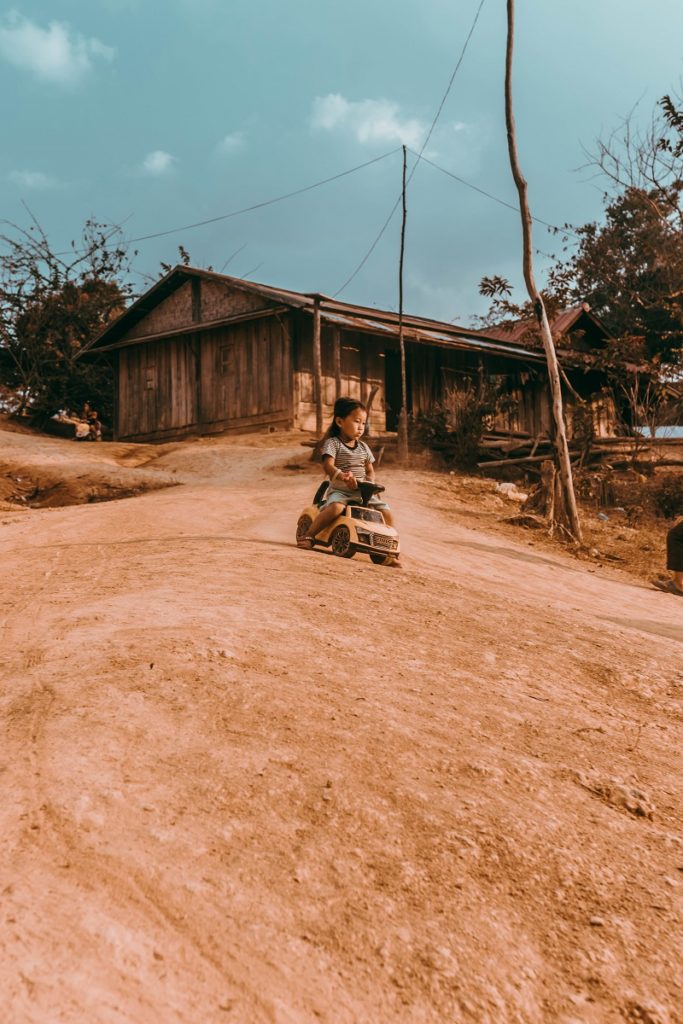
Finally, the center-piece of the village – the football pitch. It’s the only flat=ground among the hilly terrain and where most villagers congregate. The pitch is nothing but red clay, a couple of sticks representing goal posts, and a make-shift ball made of bundled-up plastic bags.
The children – at least, the less shy ones – come to the higher ground where we’re told to sit and watch the local action below (like one would in a theater). They show us the soles of their feet, which are reddened from the earth’s clay – something which feels oddly rehearsed. Most of the villagers are barefoot – perhaps that’s why we were asked to bring sandals as a gift.
They show us the soles of their feet, which are reddened from the earth’s clay – something which feels oddly rehearsed.
Akha people do not dress in traditional wear unless partaking in special rituals. I’m told they will also dress up if noteworthy tourists, or “VIPs”, are coming through. Incidentally, I wasn’t deemed important enough.
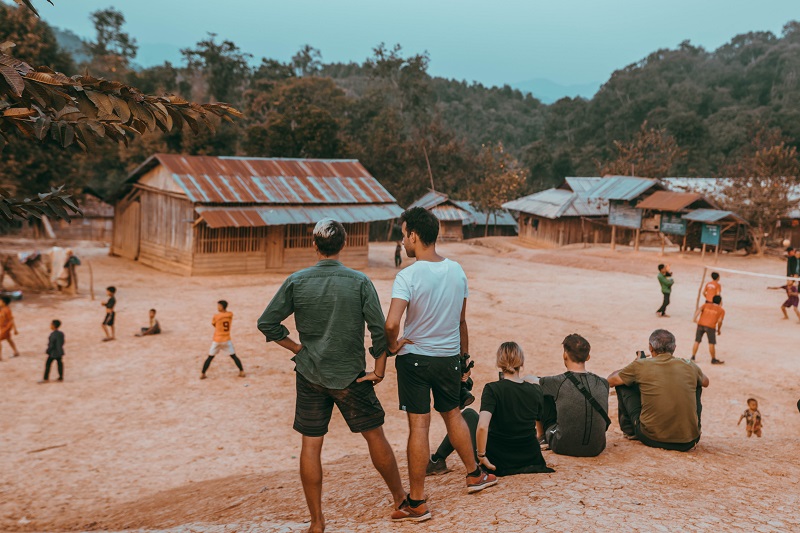
As the sun sets on our first night, fires are lit along the village’s network of pathways to supplement the moonlight. There is no electricity in this region of northern Laos.
The tour group sits around the fire talking amongst ourselves, eating rice off banana leaves. Our guide has disappeared. The only local in the vicinity is responsible for keeping the fire going, but doesn’t speak English.
We go to bed without much knowledge of the village or Akha culture. We don’t even so much as know the names of the family whose home we are sleeping in.
There are eleven of us, in total, sharing a dorm-room sized home. Six foreigners, and a family who shares their home without a single expression on their faces. Rarely is there even an acknowledgment that we, the six strangers in their home, are there.
A bed sheet hangs to separate the parents’ sleeping quarters from where we are sleeping with their three small children. We hardly see the parents during our stay – something which seems common throughout the village. It’s seemingly a society of children – the older siblings watching after the young.
Just a tarp where we lay separates us from the earth’s cold clay. The thatch roof above us is hardly enough to keep the floor dry if it were to rain. We were told not all families own tarps, and most households don’t have beds.
The home fills with smoke each morning from the wood-fire next to where we sleep. The childrens’ hoarse coughs wake me up.
The fire is mostly used for heat, but also to rid water from the spout of its bacteria. That same water is used for all aspects of daily life: drinking, cooking, cleaning, and bathing.
As the sun’s first light creeps in through the bamboo-walled slats, we see just how much smoke suffocates the room. It makes us all jump from the warmth of the blankets to get some fresh air. Meanwhile, the family stays inside.
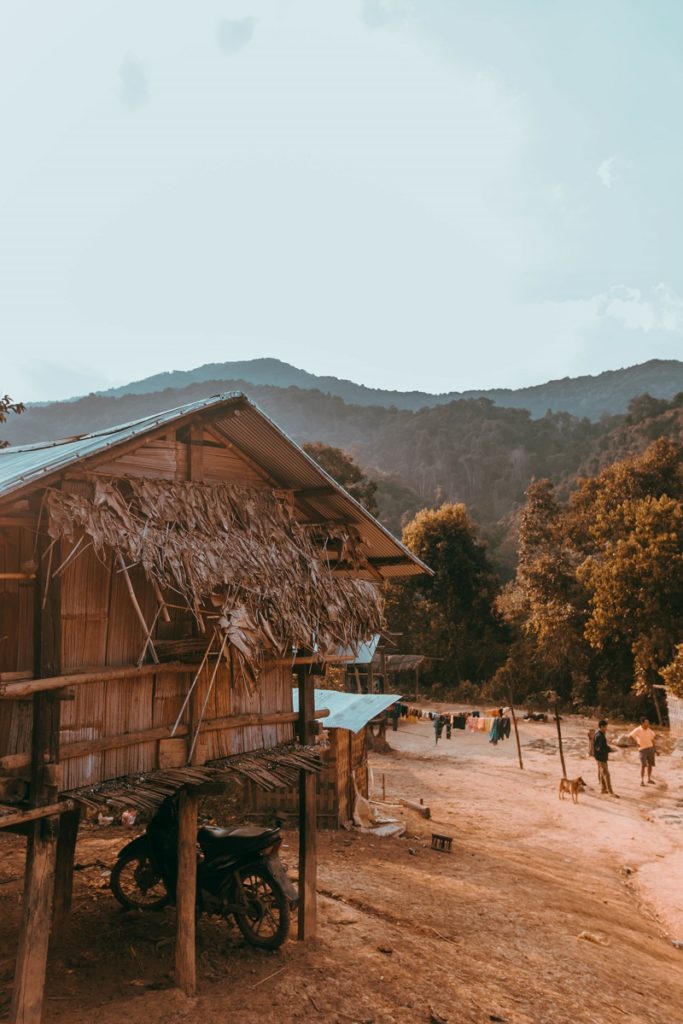
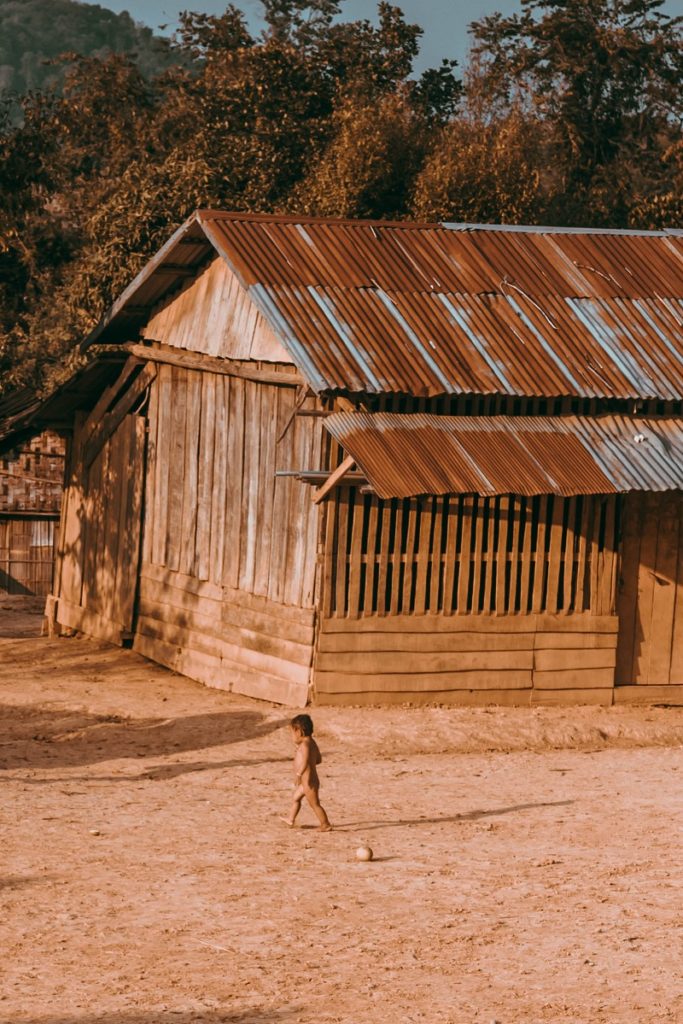
We walk around the village, swiveling our heads like a tourist might inside the Louvre. There are different kinds of homes throughout. “High-houses”, those built on stilts; and “low-houses”, being on the ground. The Akha are known for being semi-nomadic and won’t always build permanent structures. Everything looks fragile – even the Akha people, themselves. However, the water spout indicates this village is a permanent settlement.
There is very little interaction. Certainly, nobody was eager to share their culture with each other. No one learned from each other. The whole experience starts to feel invasive; a place we shouldn’t be.
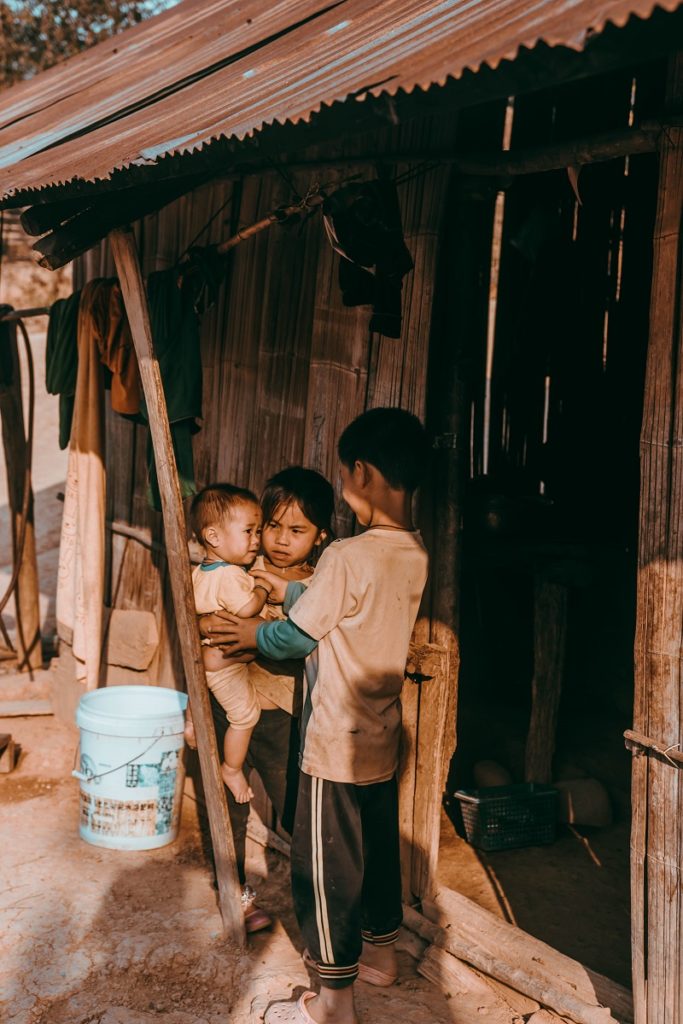
Akha ecotourism
Rural cultural tours often represent a good opportunity for the local tribes and villagers to create an income. Locals earn an income from tours in several ways: by earning tips, by selling artisan crafts, and by receiving a cut of the tour profits.
In some cases, this is a much-needed source of income. Such as within rural African tribes – in regions where agriculture has become almost impossible due to desertification from global warming. Therefore, for the first time in their ancient history, tribesmen must figure out ways to pay for what they eat.
The Akha are the poorest of all hill tribes in Laos, often addressed in a derogatory fashion as “kah-kho”, or ‘my slave’.
In most regions, they are looked at as second-class citizens. In some countries, not even citizens at all. Their economic opportunities are limited to the very community they live in. Income from tours represent a portion of their livelihood.
Yet, something didn’t feel right.
The Akha’s long history of mistreatment, on top of the decades of Communist rule in Laos, has made Pu Sam Gnua a very guarded community. Distrust weighs heavy on their faces.
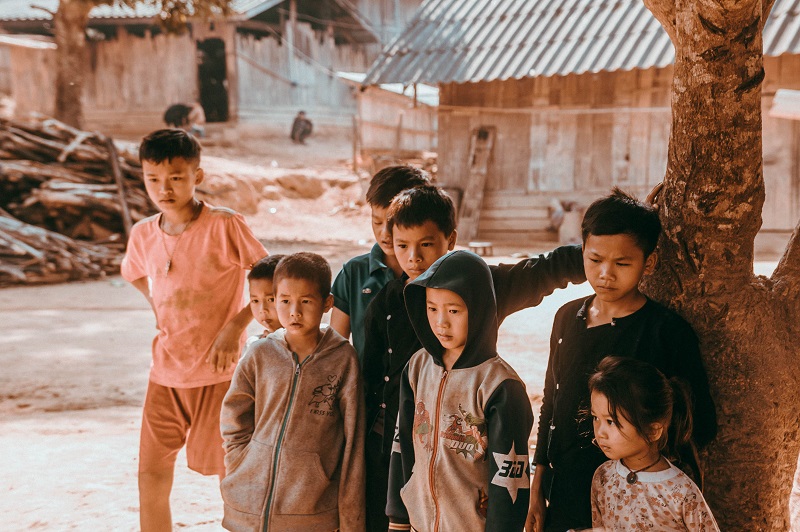
The further our tour proceeded (in herd-style fashion), the deeper the pit in my stomach became.
I was witnessing the beginning of the effects of globalization in Pu Sam Gnua. An indigenous culture lost-in-time which was now clawing at modernity’s door; all in the name of ‘culture-sharing’.
It’s hard to understand the impact foreign visits have on such cultures, but I’m almost certain they don’t help as much as we’re told. Unfortunately, it took experiencing this first-hand to realize it.
An indigenous culture lost-in-time which was now clawing at modernity’s door.
And, so, the villagers of Pu Sam Gnua will continue to tolerate the tourists as long as it is bringing them an income – despite the impact it will have on their traditional way of life; despite the humiliation of having other human beings observe your living conditions like that of a zoo animal; despite their children being exploited for photographs and shared online without permission.
The routine tour has become a part of their culture as much as it wasn’t just a few decades ago. The new generation of Akha have become dependent – waiting around until dusk when they know a new crop of tourists will be arriving with new money. A far cry from how their mothers, fathers, and grandparents survived.
It provides them a living, so, why not?
It’s not my place to suggest the Akha take a stand against these tours. Nor is it my place to blame foreigners who crave this type of experience. Nor assume how tour operators can make this a better experience for everyone.
I don’t have answers, all I know is:
The adults of Pu Sam Gnua no longer smile.
In fact, they probably stopped smiling for tourists not long after 2001 when the tours began.